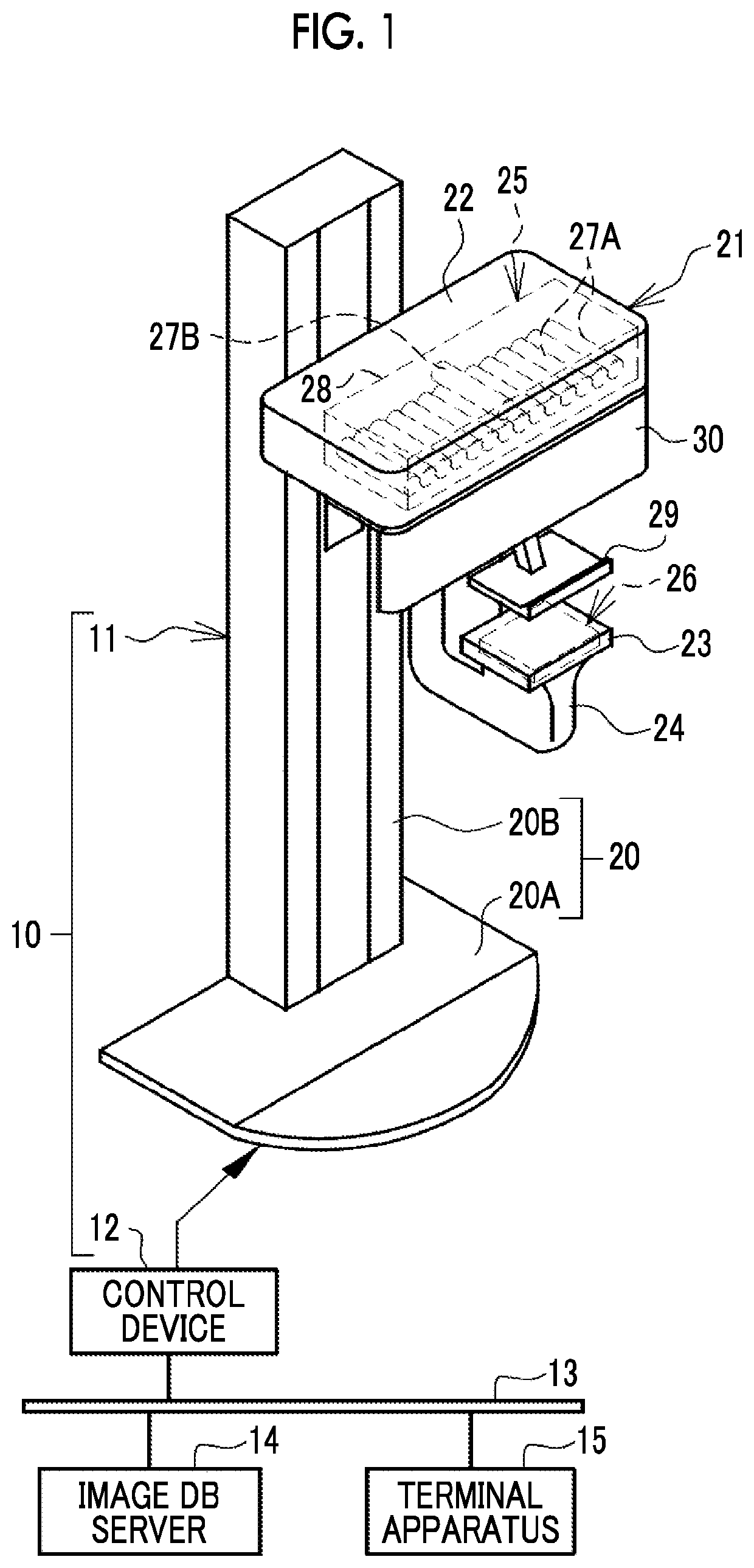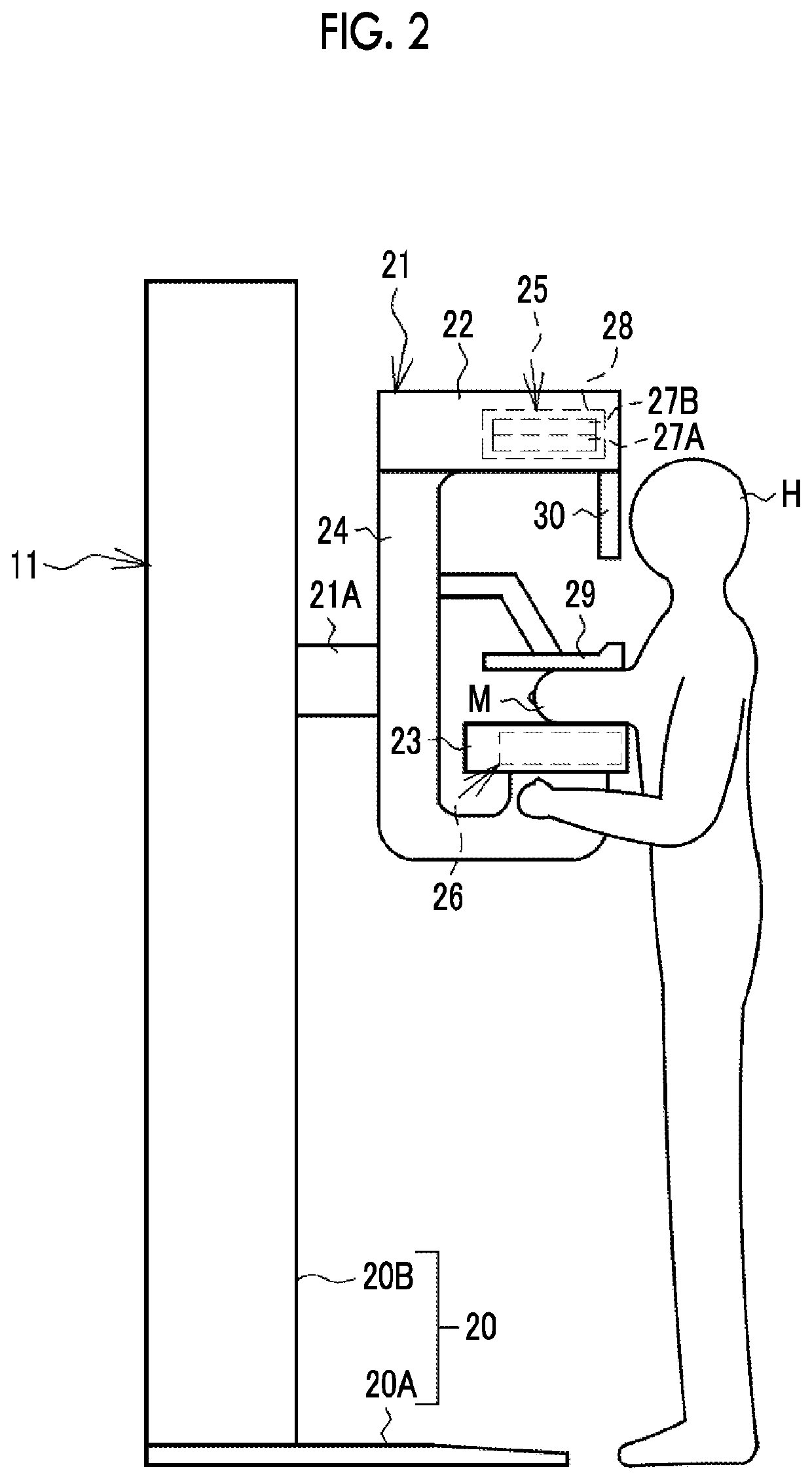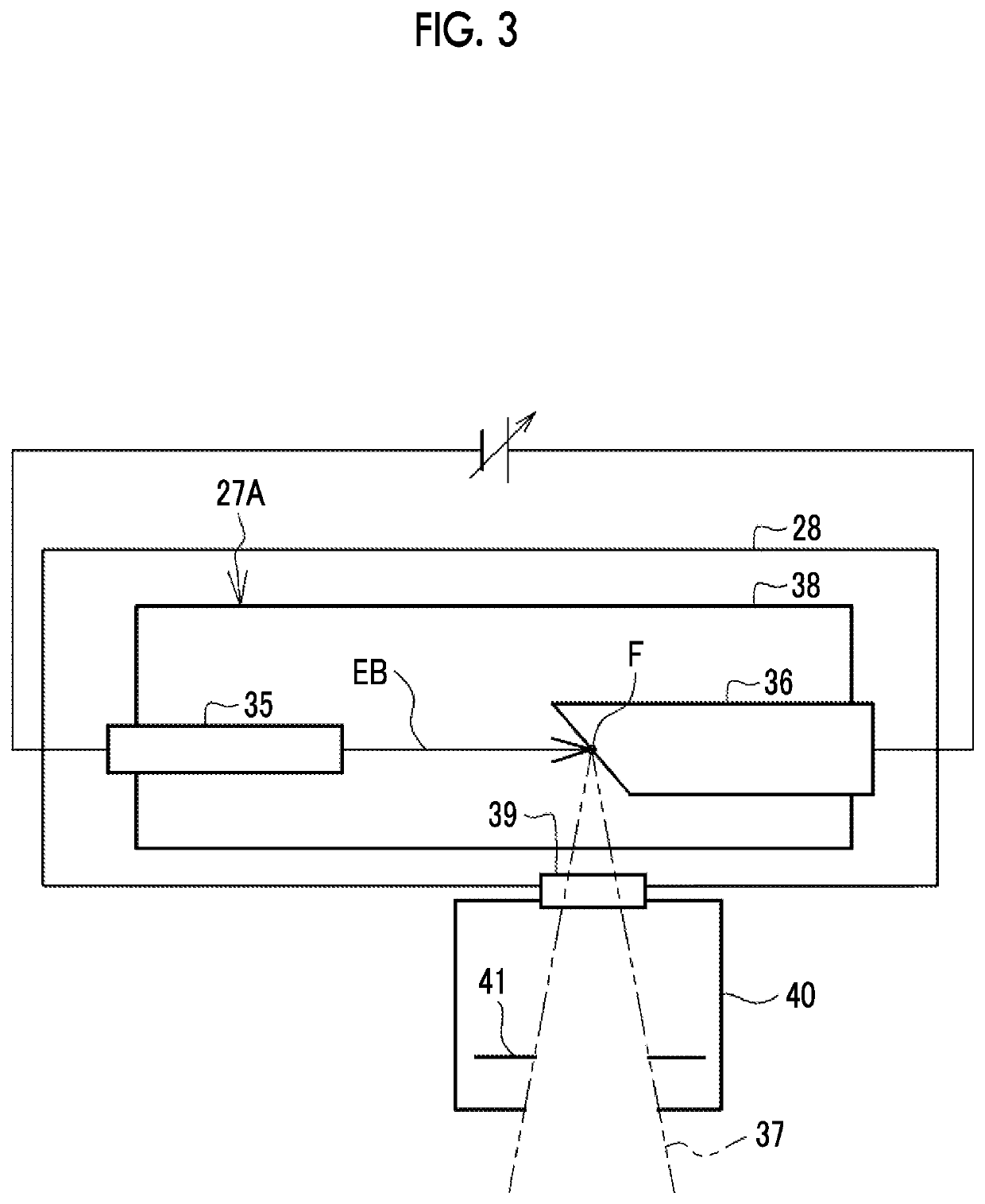Tomosynthesis imaging apparatus and method for operating the same
a technology of tomosynthesis and imaging apparatus, which is applied in the direction of x-ray tubes, patient positioning for diagnostics, applications, etc., can solve the problems of increasing the burden on the subject and relatively long imaging tim
- Summary
- Abstract
- Description
- Claims
- Application Information
AI Technical Summary
Benefits of technology
Problems solved by technology
Method used
Image
Examples
first embodiment
[0042]In FIGS. 1 and 2, a mammography apparatus 10 which is an example of a tomosynthesis imaging apparatus uses a breast M of a subject H as an object. The mammography apparatus 10 irradiates the breast M with radiation 37 (see, for example, FIG. 3), such as X-rays or y-rays, to capture a radiographic image of the breast M.
[0043]The mammography apparatus 10 includes an apparatus main body 11 and a control device 12. The apparatus main body 11 is installed, for example, in a radiography room of a medical facility. The control device 12 is installed, for example, in a control room next to the radiography room. The control device 12 is connected to an image database (hereinafter, referred to as DB) server 14 through a network 13, such as a local area network (LAN), such that it can communicate with the image DB server. The image DB server 14 is, for example, a picture archiving and communication system (PACS) server, receives a radiographic image from the mammography apparatus 10, and...
second embodiment
[0085]In a second embodiment illustrated in FIG. 12, a second radiation tube 27B_S having a smaller diameter than each of a plurality of first radiation tubes 27A is used.
[0086]In FIG. 12, the second radiation tube 27B_S is disposed at a position corresponding to the center of the maximum scanning angle between two adjacent first radiation tubes 27A. The second radiation tube 27B has a diameter φB less than the diameter φA of each of the plurality of first radiation tubes 27A (φB<φA). For example, φB is half of φA.
[0087]As such, in the second embodiment, the diameter φB of the second radiation tube 27B_S is less than the diameter φA of each of the plurality of first radiation tubes 27A. Therefore, the possibility that the regularity of the intervals D between the focuses F1 to F14 will be disturbed is reduced and the concern that the process related to the generation of the tomographic image T will be complicated is reduced, as compared to a case in which the first radiation tubes 2...
third embodiment
[0090]In a third embodiment illustrated in FIG. 14, a second radiation tube 27B_OR is disposed at a position outside the maximum scanning angle ψ.
[0091]In FIG. 14, the second radiation tube 27B_OR is disposed at a position outside the maximum scanning angle of tomosynthesis imaging which is defined by positions SP1 and S14 at both ends among a plurality of positions SP1 to SP14. In addition, the second radiation tube 27B_OR is disposed at a position that is outside the maximum scanning angle and is at a distance (an interval D in FIG. 14) equal to or less than the interval D between the focuses F1 to F14 from one (the position SP14 in FIG. 14) of the positions SP1 and SP14.
[0092]As such, in the third embodiment, the second radiation tube 27B_OR is disposed at a position outside the maximum scanning angle ψ. Therefore, there is no possibility that the regularity of the intervals D between the focuses F1 to F14 will be disturbed and no concern that the process related to the generatio...
PUM
 Login to View More
Login to View More Abstract
Description
Claims
Application Information
 Login to View More
Login to View More - R&D
- Intellectual Property
- Life Sciences
- Materials
- Tech Scout
- Unparalleled Data Quality
- Higher Quality Content
- 60% Fewer Hallucinations
Browse by: Latest US Patents, China's latest patents, Technical Efficacy Thesaurus, Application Domain, Technology Topic, Popular Technical Reports.
© 2025 PatSnap. All rights reserved.Legal|Privacy policy|Modern Slavery Act Transparency Statement|Sitemap|About US| Contact US: help@patsnap.com



